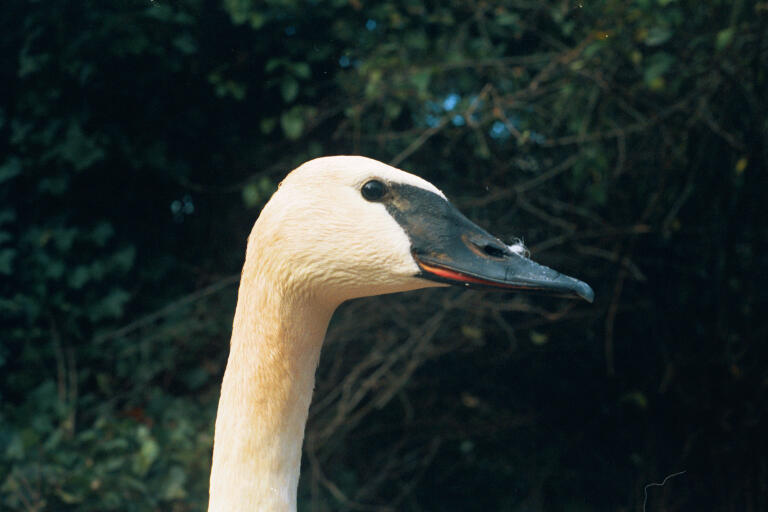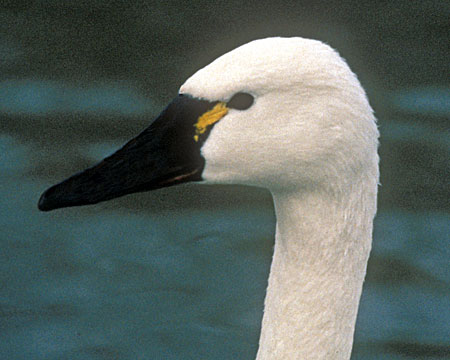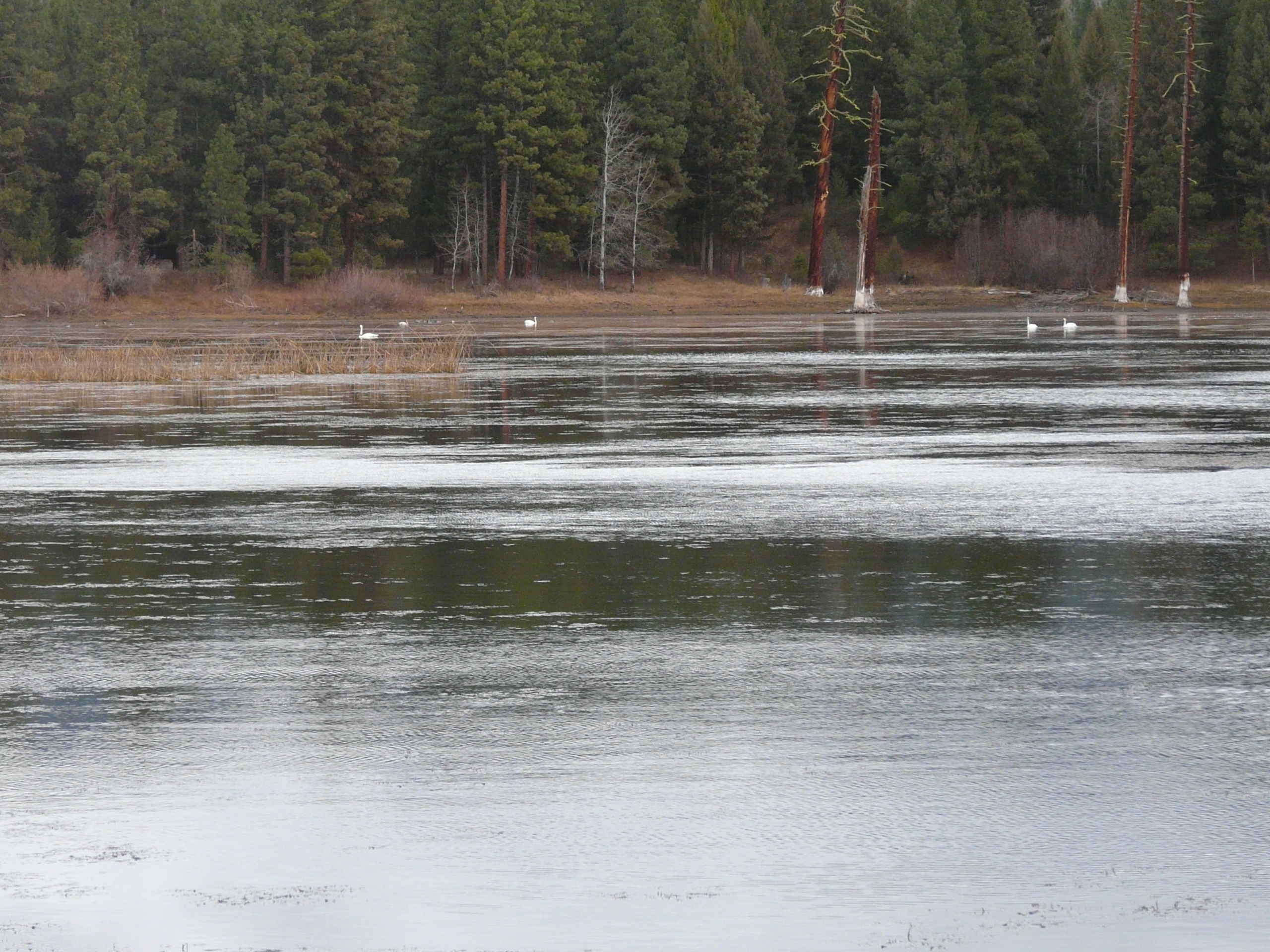The passing fall has seen some swans leave the Blackfoot and others arrive. However, unlike during the summer months, not all the swans we are seeing lately are Trumpeter Swans. This time of year, Tundra Swans are migrating through western Montana from their breeding grounds in the far north. As its name implies, this species breeds on the high tundra across the northern edge of North America.
Trumpeters and Tundras are very similar in appearance and can be quite challenging to positively identify. (Snow Geese are also relatively large, mostly white water birds, although they are less than half the size of Trumpeters. Snow Geese have black wingtips.) Here are some tips for telling Trumpeters from Tundras:
The Trumpeter Swan is larger than the Tundra, although they usually have to be seen together to be able to distinguish them by size. The Trumpeters also has a larger, straighter bill relative to the head and the head may appear longer and less rounded than in the Tundra. The black of the bill extends around the eye, so that the eye is not distinct from bill. The bill is black and often has an orange line on the lower mandible; orange may be present on some Tundras. The neck of the Trumpeter appears longer than the Tundra’s neck.
On the Tundra Swan the bill is more dish-shaped in profile, and smaller in proportion to the head compared to Trumpeter. The head is very round and the eye is usually distinct from the bill. Tundra Swans have a wide range of head-bill shapes, some having very obvious concave bills, while others appear straighter. Most have a yellow spot of varying size in front of the eye.
Since a picture may be worth a thousand words, here are a couple to compare:


(If you really want to pursue this further, check out David Sibley’s post on distinguishing the two species at http://www.sibleyguides.com/2006/02/distinguishing-trumpeter-and-tundra-swans/ .)
I have been seeing flocks of Tundra Swans on some Blackfoot lakes and ponds, I’ve been seeing some migrating Trumpeter Swans who are passing through from the north, and I’ve been seeing some of our Blackfoot Trumpeters that haven’t left the valley yet. Often I will come upon a group that is a combination of all of these, and I have to look carefully for quite a while to be sure how many there are of each. Because several of our Blackfoot birds have lost their neck collars, spotting their leg bands may be the only way to tell if they are resident Trumpeters. However, if I see a large number of swans with no collars, it is likely to be a flock of migrating Tundras.

Thanks to everyone who has sent sightings and swan photos to me recently! It’s always helpful to get the updates.
